Walls Of Constantinople
2025-12-17
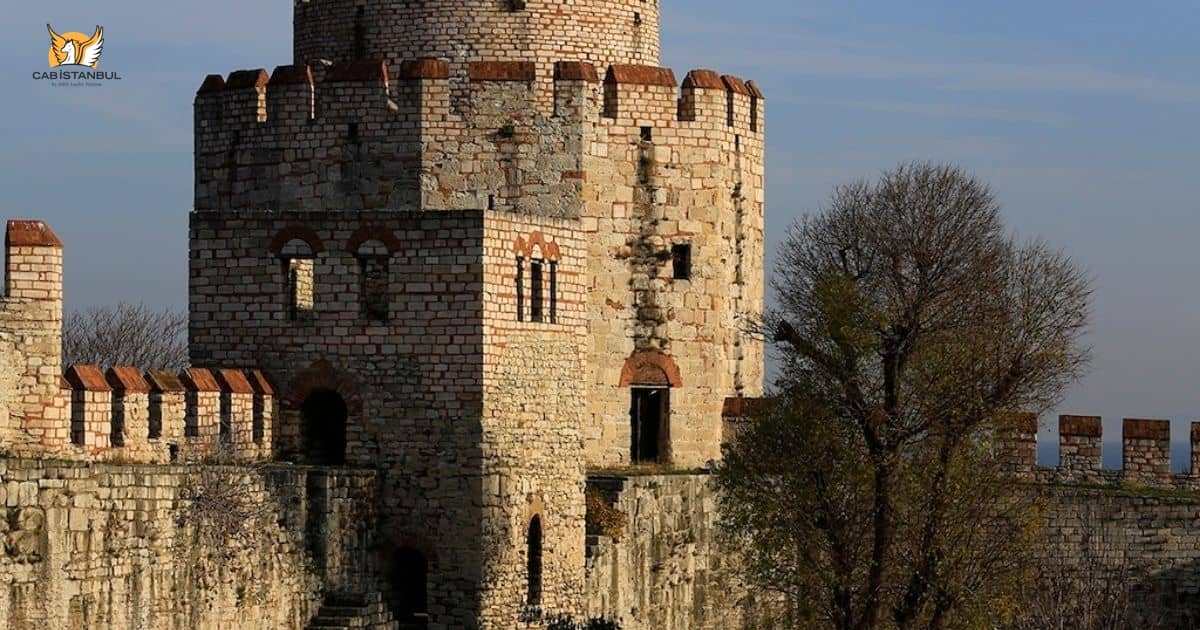
Yedikule Dungeons İstanbul
Istanbul’s ancient defens, Walls of Constantinople, a timeless monument that unites Byzantine ingenuity and Ottoman grandeur. Rising majestically in the historic Fatih district, this monumental fortress—known locally as Yedikule Hisarı or Castle of the Seven Towers—is more than a relic; it’s a living narrative of two powerful empires that once shaped world history. The Walls of Constantinople, originally constructed under Emperor Theodosius II in the 5th century, encircled the Byzantine capital like an unbreakable shield. After the Ottoman conquest in 1453, Sultan Mehmed II transformed part of these formidable ramparts into the grand Yedikule Fortress, incorporating the ancient Golden Gate, a ceremonial triumphal arch once reserved for emperors’ victorious returns.
Exploring the Yedikule Dungeons Museum today offers a haunting yet fascinating journey through centuries of triumphs and tragedies. Deep within its towers, prisoners of state—ambassadors, traitors, and nobles—once awaited their fate in dimly lit chambers that echo with history’s whispers. Above ground, the towers provide breathtaking panoramic views of the Marmara Sea and the enduring city walls of Istanbul, recognized as a UNESCO World Heritage Site. Visitors can marvel at the masterful stonework, inscriptions, and Byzantine reliefs that speak of artistry as much as power. Every gate, arch, and dungeon cell reveals the layered soul of Istanbul, from Constantinople’s imperial might to Ottoman architectural mastery.
A visit to the Yedikule Fortress and Dungeons Museum is more than sightseeing—it’s an encounter with living history, a portal into a world where fortresses defended civilizations and legends were born in stone. It stands today as a symbol of Istanbul’s resilience, embodying the spirit of a city that has endured through millennia, bridging the ancient Roman Empire and the modern Republic of Turkey. Whether you are an architecture enthusiast, a historian, or a traveler seeking authentic experiences, this remarkable site promises a journey through time, culture, and empire.
Enhance your Istanbul adventure with our premium chauffeur-driven car rental and airport transfer services. Cab Istanbul ensures comfort, reliability, and luxury from Istanbul Airport to your hotel or any destination across the city. Travel effortlessly in a private vehicle with a professional driver and experience Istanbul with sophistication.
Yedikule Fortress
Istanbul City Walls
The Istanbul City Walls refer to the same fortifications as the Walls of Constantinople, now integrated into modern Istanbul. Spanning roughly 22 km in total, they include the land walls (7.5 km), Golden Horn walls (5.5 km), and Marmara Sea walls (9 km). The land walls, particularly the Theodosian section, are the best-preserved, with notable gates like the Golden Gate, Edirne Gate, and Belgrade Gate still visible. After the Ottoman conquest, the walls were maintained until the 19th century when parts were dismantled for urban expansion. Today, remnants like Yedikule Fortress and the Galata Tower highlight their historical role. The walls are part of Istanbul’s UNESCO World Heritage listing, reflecting their architectural ingenuity and strategic importance across centuries.
These structures collectively narrate Istanbul’s evolution from a Byzantine stronghold to an Ottoman metropolis, blending military might with cultural legacy.
Walls of Constantinople-İstanbul
The Walls of Constantinople are a series of defensive stone walls that protected the city—originally founded as the Roman Empire’s new capital by Constantine the Great in 324 AD. Initially, Constantine built walls encircling the city to guard against land and sea attacks. As the city expanded, the most famous section, the Theodosian Walls, was constructed in the 5th century under Emperor Theodosius II. This double-layered system, stretching about 6.5 km from the Golden Horn to the Sea of Marmara, featured an inner wall, an outer wall, a moat, and numerous towers and gates. The Golden Gate, a triumphal arch adorned with marble reliefs, was a key entry point for emperors. The walls withstood numerous sieges, including Arab attacks in the 7th and 8th centuries, and were breached only twice: by the Fourth Crusade in 1204 and by Mehmed II’s forces in 1453, marking the fall of the Byzantine Empire. The walls’ elaborate design made them one of antiquity’s greatest fortification systems.
Yedikule Dungeons Museum
Castle of the Seven Towers
Known as the "Fortress of Seven Towers," Yedikule has captivated the imaginations of historians, architects, and tourists alike with its imposing structure and fascinating history. Each tower, unique in its name and purpose, tells a story of a bygone era, offering insights into the architectural and historical significance of this magnificent citadel.
Young Osman Tower: Named after Osman II, this tower echoes the tragic tale of a young sultan whose life and reign were cut short, encapsulating a moment of Ottoman history within its walls.
Armory Tower: Serving as a crucial storehouse for weapons and armaments, the Armory Tower played a vital role in the defense mechanisms of the fortress, safeguarding the arsenal that protected the city.
III. Ahmet Tower (Pastorama Tower): Bearing the name of Sultan Ahmet III, this tower is also known as the Pastorama Tower, offering a panoramic vista of Istanbul's historical peninsula, and bridging the city's past and present.
Treasure Tower (Millet Tower): A repository for treasures and valuable artifacts, the Treasure Tower, or Millet Tower, stood as a symbol of the empire's wealth and prosperity, guarding the riches accumulated over centuries.
Dungeon Tower (Inscriptions Tower): This tower, marked by inscriptions, served as a grim reminder of its role as a prison and execution site, holding within its walls tales of despair and historical significance.
Ball Tower (Girls' Tower): Though shrouded in mystery and various legends, the Ball Tower, also known as the Girls' Tower, adds a layer of intrigue and folklore to the fortress's storied past.
Flag Tower: Standing tall and proud, the Flag Tower was a beacon of power and sovereignty, where flags were hoisted to proclaim victory, dominance, and the enduring spirit of the city.
Together, these seven towers of Yedikule Fortress offer a journey through time, from their strategic roles in defense and incarceration to their significance as symbols of power and authority.
Yedikule Dungeon
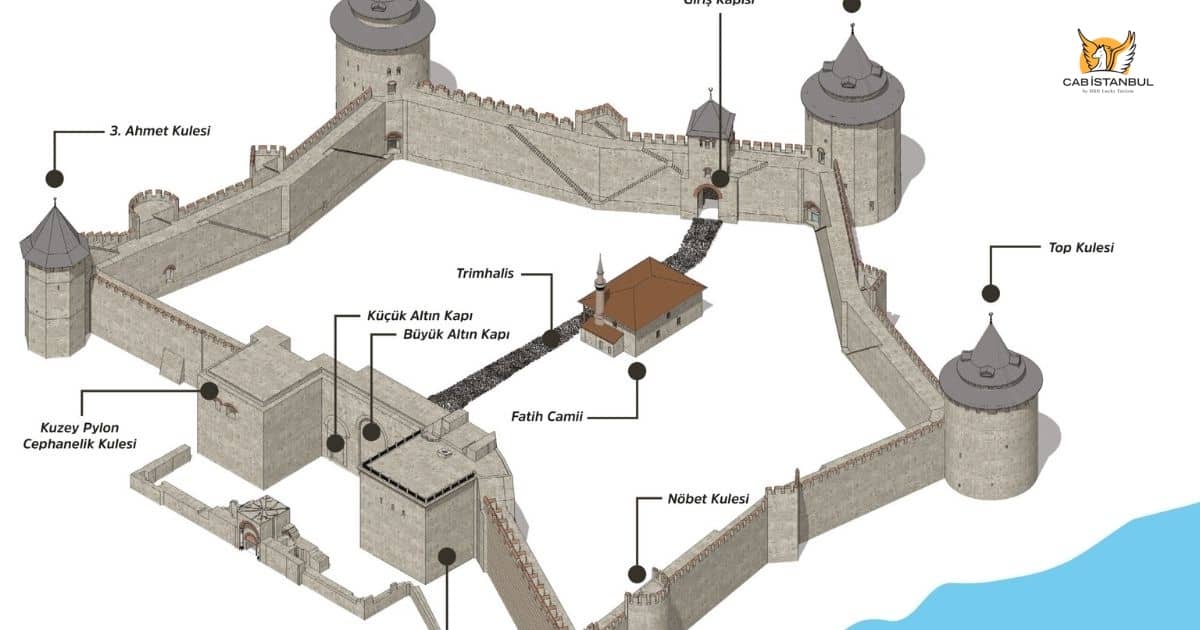
Yedikule Museum
As we continue our exploration of the captivating Yedikule Museum, we now delve into the pages of the Ottoman period, an era marked by conquest, consolidation, and the safeguarding of treasures. Yedikule, with its historic fortress, played a pivotal role in preserving the legacy of this time.
The Ottoman Conquest and Yedikule's Transformation
With the triumphant Ottoman conquest of Istanbul in 1453, sweeping changes transformed the cityscape. Ottoman rulers settled newcomers, stretching from the shores of the Golden Horn to Topkapı and Yedikule. During this transformative period, Fatih Sultan Mehmet, the conqueror of Istanbul, left an indelible mark on Yedikule. In 1458, he undertook the construction of the Yedikule Fortress as an inner castle. This fortress held immense significance, serving as the repository for the wealth and valuables of Turkish rulers. Within the walls of Yedikule Fortress, a trove of treasures found their sanctuary. One tower held gold bullion and currency, while another safeguarded ancient and precious artifacts and official documents. Yet another tower secured the spoils brought back by Yavuz Sultan Selim from Iran. Between 1458 and 1789, the state treasury, known as the Treasury-i Hümayun, found its residence here, before being relocated to the palace during the reign of Sultan Murad.
The Enigmatic Yedikule Dungeons
The heart of intrigue within Yedikule is its dungeons, nestled within the southern pylon, often referred to as the "Bloody Well." These chambers have borne witness to countless historic events. It is recorded that Çandarlı Halil Pasha and his sons were among the initial prisoners confined within these walls following the city's conquest. Subsequently, the last emperor of the Trabzon Greek Empire, David Komnenos, joined Ottoman territories in 1461, and his sons met their fate in the depths of the Yedikule fortress (dungeon) in 1463.
Notable Inmates of Yedikule Dungeons
Among the many individuals imprisoned in the Yedikule dungeons, one figure stands out prominently in history: Sultan II. Osman, also known as Young Osman. In 1622, Sultan II. Osman was dethroned, making way for the ascent of II. Mustafa. After the coronation ceremony at Topkapı Palace, Grand Vizier Davut Pasha, Janissary Agha Derviş Ağa, and their associates transported Sultan Osman to the Yedikule dungeon in a market cart. In a fateful midnight encounter, Osman resisted his captors but met his tragic end within the fortress walls. The Yedikule Museum, with its dungeons and fortress, offers a unique window into the tumultuous chapters of the Ottoman era. Each stone and chamber bears witness to a rich history of power, intrigue, and transformation, preserving the legacy of a bygone time for generations to come.
Yedikule Castle
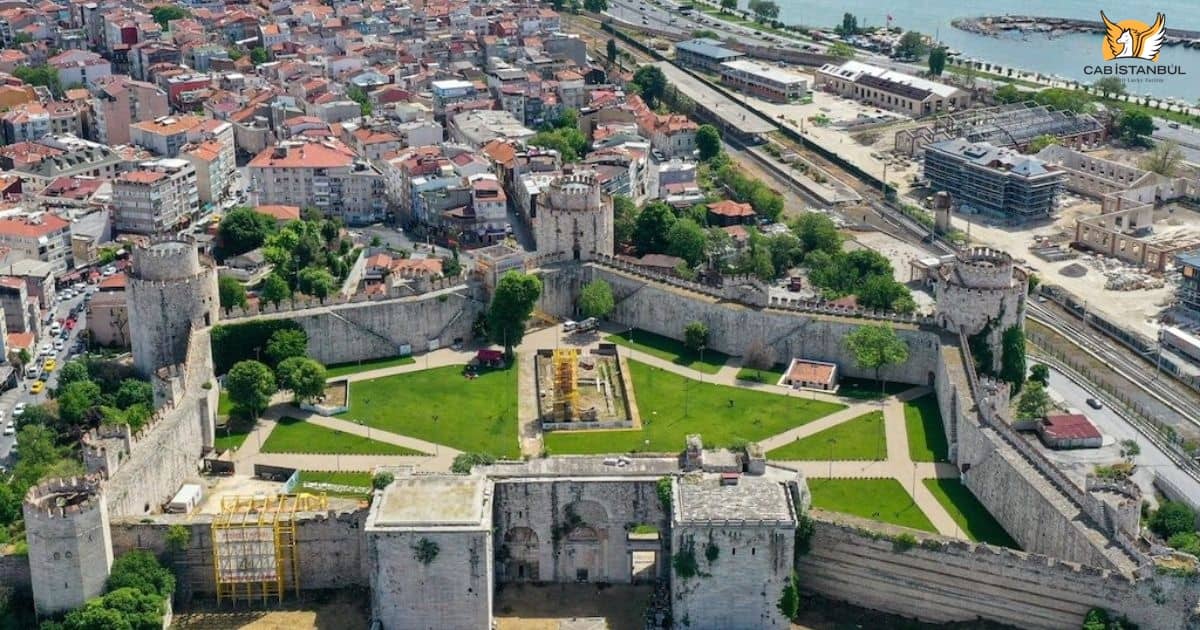
Yedikule Fortress Istanbul
The Magnificent Altinkapi and the Birth of the Seven Towers: Standing as the crowning jewel of the Byzantine walls, which stretched an impressive 22 kilometers, Altinkapi holds a special place in history. Positioned at the starting point of the ancient Constantinople-Roman road, this site was marked by a remarkable event in 388 AD. Emperor Theodosius I, in commemoration of his victory over the rebellious Clemens Maxim on the Adriatic coast, ordered the construction of an imposing "Victory Arch." This arch, reaching a towering height of 8 meters, stands as a triumphal monument in its own right, a solitary witness to history. Named "Porto Aurea" by the Byzantines, meaning "Beautiful Gate," Altinkapi was adorned with statues of Hercules, depictions of Prometheus's torture, representations of Theodosius the Great, a grand cross, and victory-themed reliefs. Regrettably, the ravages of time, including earthquakes and storms during the reigns of Leon of Isaavia and Justinian, claimed the statues and the cross. Subsequently, Emperor Theodosius I placed his own statue upon the gate, leaving an indelible mark on its history.
Traces of the Past: Torture Boards and Roman Inscriptions
Within the dungeons, traces of the past are etched into the walls, where death row prisoners left their mark. The "Torture Board" from the Byzantine era, used to secure the tortured, still bears scars from a tumultuous history. Nails, machetes, and lines remain as a testament to the suffering endured. Bullet holes, added during the Balkan War and the occupation of Istanbul by foreign soldiers, tell a tale of conflict and transformation.
The Canon Tower: Witness to Fire and Warfare
The Canon Tower, its wooden floors consumed by flames, bears the scars of a tumultuous past. Originally a dungeon like the others, it earned its name when cannons were stationed within its walls after the conquest.
The Watch Tower: Guardian of the Sea
Closest to the Sea of Marmara, the Watch Tower, though partly collapsed, served as the first line of defense against sea-borne threats. During its tenure as a prison, vigilant guards kept a watchful eye to prevent any escape attempts.
Armory Tower: Where Arsenal Meets Dungeon
Opposite the Young Osman Tower, the Armory Tower once housed weaponry but later shared the fate of its fellow towers, serving as a dungeon during both Byzantine and Ottoman periods.
The 3rd Ahmet Tower: A Tower Reborn
Originally known as the Pastroma Tower in Byzantine times, it underwent an octagonal reconstruction during the reign of Sultan III. Ahmet, completed during the time of Osman. It features a stone cross and an inscription reading "MashaAllahu Teala."
The Treasure Tower: Guardian of Wealth and Secrets
Also known as the Millet Tower, the Treasure Tower became the Ottoman state treasury after the conquest. Within these walls, the Treasury-i Hümayun held invaluable state treasures and important documents until the era of Sultan Murat.
As we wander through the Yedikule Museum, each tower and dungeon echoes with the whispers of history, offering a mesmerizing glimpse into the past. It is a place where legends intertwine with reality, and where the artifacts and stories held within continue to captivate visitors from around the world.
Yedikule İstanbul
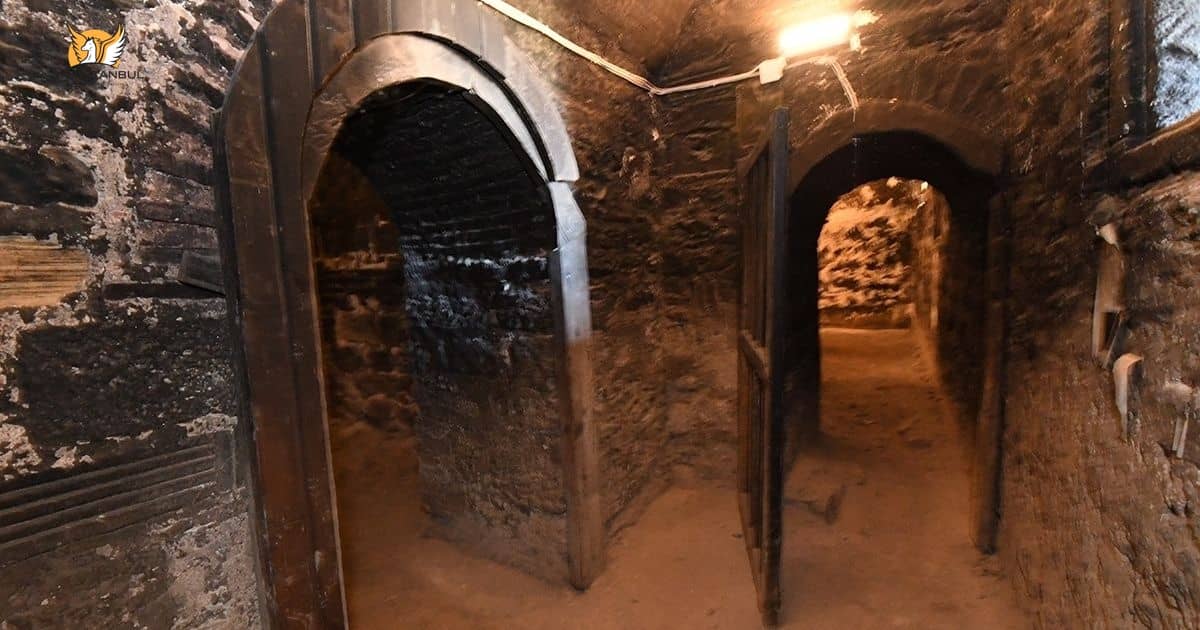
Legends of Yedikule
These dungeons, located among the imposing walls of Yedikule, contain countless legends that stimulate imagination and arouse curiosity. From the haunting story of a pagan prisoner's curse to the enigmatic legends of hidden treasures and ghostly apparitions, Yedikule's past is a labyrinth of myths waiting to be explored.
One such legend tells of a stoic pagan captive, subjected to relentless torture within these ancient walls, who, with his dying breath, uttered a curse in a language reminiscent of ancient Latin. This curse is said to have trapped the souls of the tortured, their cries still echoing through the dungeons, a chilling testament to the fortress's haunted history.
Yedikule's storied past is further enriched by its varied roles throughout history, from serving as an impromptu zoo housing lions from the Topkapı Palace to functioning as the Girls' Art House, demonstrating the fortress's versatility and significance in meeting societal needs across centuries.
The legend of the imprisonment of ambassadors during times of conflict adds another layer to Yedikule's mystique, symbolizing power and dominance. Similarly, tales of a hidden Sultan's treasure within one of the towers have fueled countless adventures, drawing treasure hunters to its doors in hopes of uncovering the secrets of the empire's wealth.
The dungeons' reputation as a site of ghostly encounters and the execution ground for Ottoman princes and deposed sultans paints a picture of a place marked by sorrow and darkness. This practice, part of the "rule of fratricide," was designed to quell internal strife but has left an indelible mark on the fortress's legacy.
Among the most captivating of Yedikule's legends is the tale of Byzantine Emperor Constantine XI's survival, a story that challenges historical accounts of the fall of Constantinople and suggests a secret chapter in the emperor's life, imprisoned within the fortress's walls
For those eager to explore the mysteries and history of Yedikule Museum, we invite you to complete a reservation form by clicking here before embarking on your visit.
Yedikule Legends
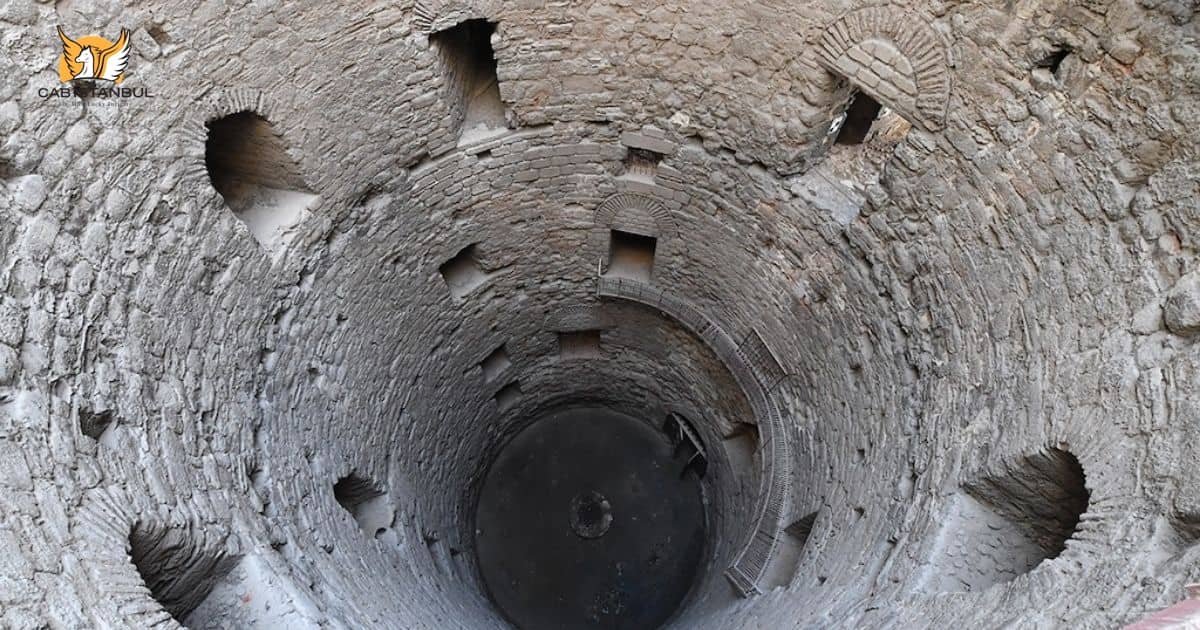
Yedikule Museum Visiting Hours and Ticket Info
Discover the Enigmatic Beauty of Yedikule Fortress Museum. Immerse yourself in the historical splendor of the Yedikule Dungeons (Yedikule Fortress Museum) in Istanbul, a monumental site with seven iconic towers: Ahmet Tower, Armory Tower, Flag Tower, and Cannon Tower, among others. This fortress, rich in history and architectural marvels, welcomes visitors to explore its ancient walls and towers, each telling a story of centuries past.
General Visiting Hours
Open Days: The Yedikule Fortress Museum is accessible to the public every day, except for Mondays, allowing ample opportunity for visitors to delve into its historical depths.
Hours: Visitors can explore the museum from 10:00 AM to 4:00 PM, ensuring a leisurely and comprehensive experience of the site's offerings.
Admission Fees: General Admission: Entrance to the Yedikule Fortress Museum is free of charge, inviting everyone to partake in the exploration of its historical treasures without a fee.
Yedikule Tours
Registration: Interested participants need to register via a form for the free guided tours available on Saturdays and Sundays. Each tour accommodates 45 people, ensuring a personalized and informative experience.
Tour Schedule: Prospective visitors must arrive at the Yedikule Fortress 20 minutes before their registered session begins, ready for an insightful journey through history.
Fees for Unregistered Participants: For those attending without prior registration, the participation fee is set at 50 TL for students, 100 TL for locals, and 200 TL for foreigners, making it an accessible cultural outing for all.
Yedikule History Night Tours
An Evening of History: The fortress offers a unique "Historical Experience with Nostalgic Lantern" every evening, providing a mesmerizing tour of the 1600-year-old site.
Age Restriction: These night tours are available to participants over the age of 18, ensuring an adult audience for these special sessions.
Tour Timings: Two sessions are available each evening from 20:30 – 21:30 and 21:30 – 22:30, allowing visitors to experience the fortress under the cover of night.
Transportation Post-Tour: At the conclusion of the tour, transportation is provided from Yedikule Fortress to Yenikapı Marmaray and Fatih Municipality, adding convenience to the experience.
Reservation Required: All fortress tours require prior reservation, with sessions opened on a weekly basis to ensure availability.
Golden Gate
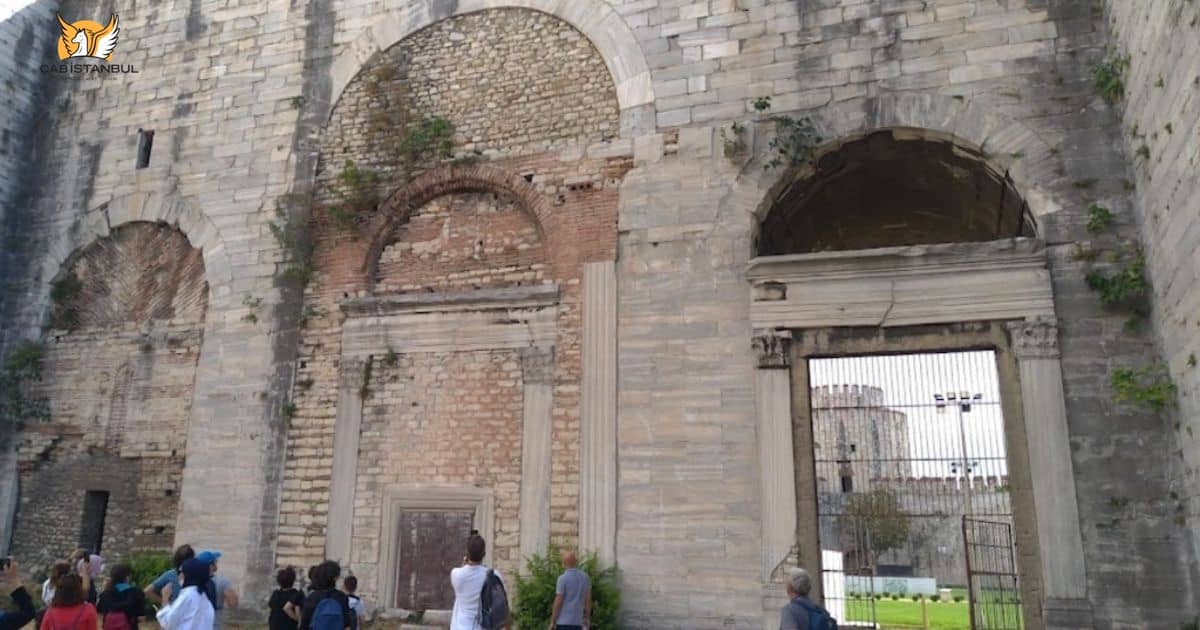

Write a Comment !